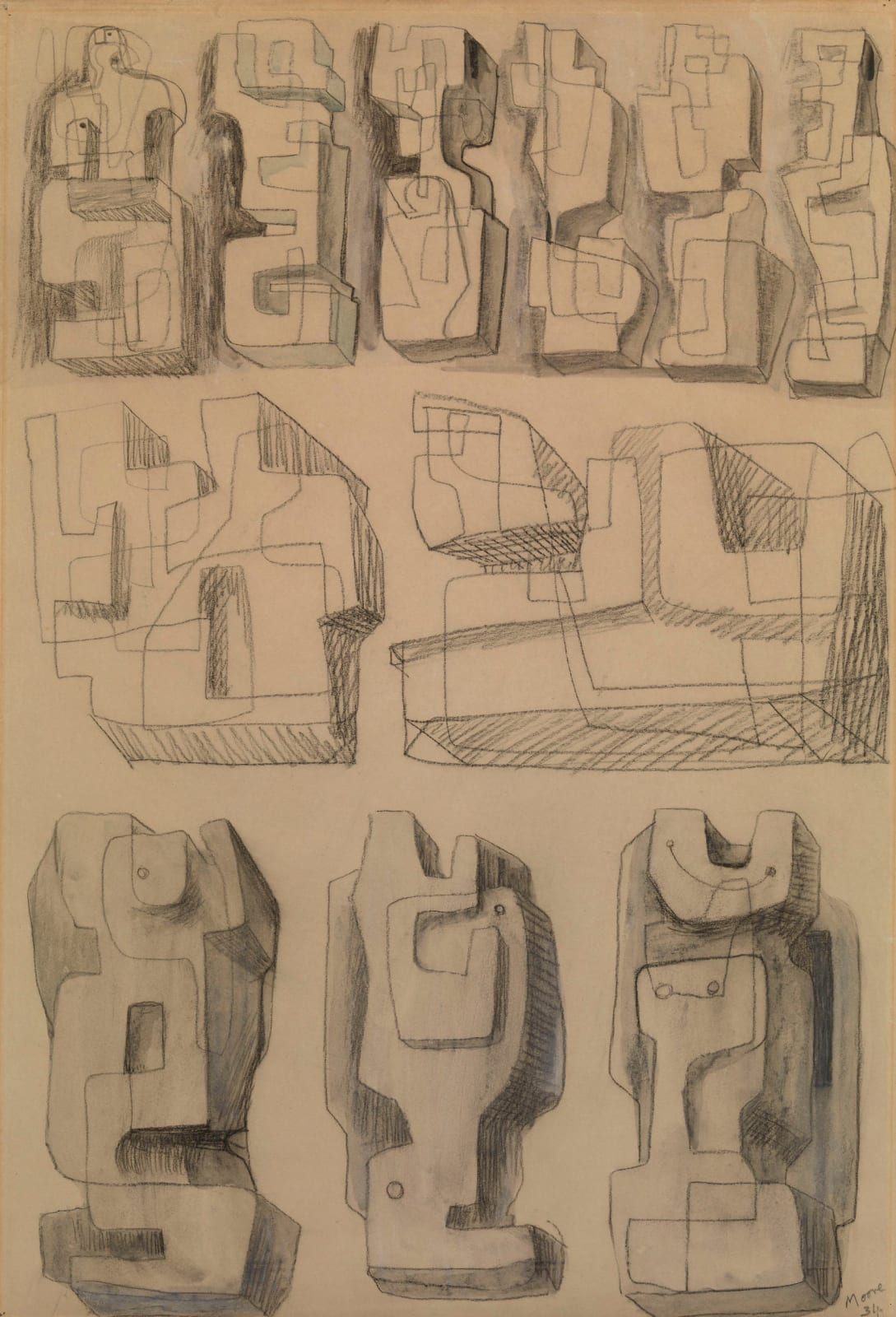Henry Moore British, 1898-1986
22 1/8 x 14 7/8 in
Sitting above what is now an Hermès store, Henry Moore’s Time-Life Screen (1952-53) looks out over Bond Street, installed on what was previously the Time-Life company’s London building. Moore used these sketches and other drawings while preparing the proposals for his screen.
Henry Moore is one of the most influential public sculptors of our time. Drawing on his studies of Classical, pre-Columbian and African art, Moore created original and truly modern sculptural forms. Abstractions of organic shapes were his primary motif. His seated, standing, and reclining figures comprise an enduring vocabulary reflecting the universality of the human condition.
"The observation of nature is part of an artist's life, it enlarges his form [and] knowledge, keeps him fresh and from working only by formula, and feeds inspiration." (Moore) "In my opinion, everything, every shape, every bit of natural form, animals, people, pebbles, shells, anything you like are all things that can help you to make a sculpture." (Moore as quoted in Five British Sculptors (Work and Talk) by Warren Forma, 1964)
Moore was given his first major retrospective abroad by the Museum of Modern Art, New York, in 1946. He won the International Prize for Sculpture at the Venice Biennale of 1948. He executed several important public commissions in the 1950s, among them Reclining Figure, 1956–58, for the UNESCO Building in Paris. He was awarded the British Order of Merit in 1963 and in 1978 an exhibition of his work organized by the Arts Council of Great Britain was held at the Serpentine in London, at which time he gave many of his sculptures to the Tate Gallery, London.
